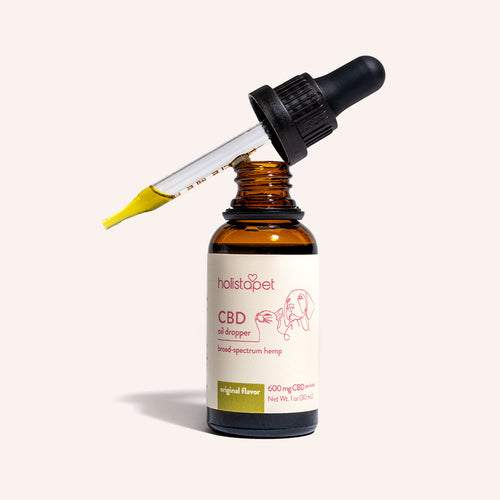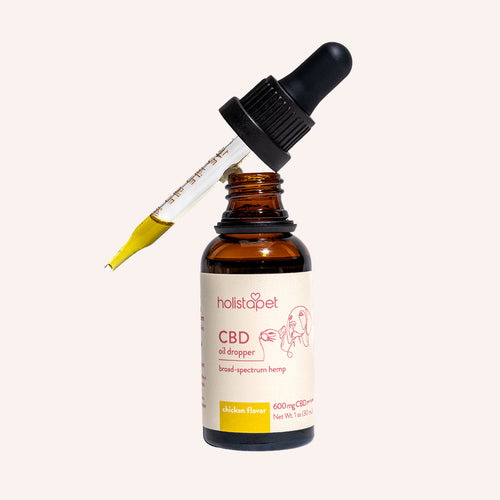Dog acid reflux isn't picky. It can hit any pup, anytime. When that stomach acid pushes past a dog's esophagus, it's a recipe for discomfort. You might catch your pet pacing after meals, burping, or giving you that "something's not right" look.
Catching your dog's acid reflux issues early means less irritation and more zoomies. A few smart changes, plus knowing the signs, can help your furry friend's belly settle down, so they can enjoy their dinner without the fiery aftermath.
What Is Acid Reflux in Dogs?

Acid reflux (also called gastroesophageal reflux disease or GERD) happens when gastric acid flows backward from the stomach into the esophagus. The lower esophageal sphincter, a small muscle at the stomach's entrance, should close tightly after food passes through, but sometimes it doesn't.
When this happens, the stomach contents irritate the esophageal lining. Over time, that irritation can cause discomfort and digestive trouble. Understanding how acid reflux works is the first step toward managing it and helping your pup feel comfortable again.
How Acid Reflux Develops in Dogs
Acid reflux starts when the lower esophageal sphincter weakens or relaxes at the wrong time. This muscle normally keeps stomach acid and partially digested food where they belong. If it doesn't close properly, acid production keeps working, and the acid can travel up into the esophagus.
Frequent exposure to gastric acid irritates the esophageal lining and disturbs normal digestion. Over time, this repeated exposure can lead to more discomfort and make treating the issue more complicated.
Common Triggers and Risk Factors
Some dogs are more likely to experience acid reflux than others. Knowing what can set it off helps you make better choices for your pup's routine and diet. Here's what to keep in mind:
- High-Fat Foods. These slow digestion and increase gastric acid production.
- Overeating. Adds pressure to the stomach and lower esophageal sphincter.
- Hiatal Hernia. Allows contents in the stomach to move into the chest cavity.
- Anesthetized Dogs. Relaxed muscles can trigger reflux.
- Younger Dogs. A shorter esophagus makes reflux occur more easily.
- Underlying Conditions. Issues in the digestive system can affect function.
Acid Reflux Symptoms To Watch for in Dogs

Acid reflux shows up in different ways, and the signs can range from mild to hard-to-miss. Spotting these changes early can help you get your pooch the care they need before things get worse. Keep an eye out for:
- Vomiting
- Regurgitation
- Coughing
- Loss of Appetite
- Weight Changes
- Signs of Discomfort After Eating
- Bad Breath
- Lip Licking
- Persistent Drooling
Vomiting, Regurgitation, and Coughing
When acid reflux strikes, vomiting and regurgitation are often the first red flags. Vomiting involves forcefully expelling the contents of the stomach. Meanwhile, regurgitation brings up undigested food with little effort.
Coughing can happen when gastric acid irritates the throat or when a bit of the stomach's contents gets inhaled. In some cases, this irritation can lead to more serious issues like aspiration pneumonia. Paying attention to these signs can help catch acid reflux before it causes bigger problems.
Loss of Appetite and Weight Changes
A dog with acid reflux may start avoiding meals they once enjoyed. The irritation in the esophagus can make swallowing uncomfortable, so they skip food to avoid the feeling.
Over time, this reduced intake can lead to noticeable weight loss. Some canines may also lose muscle mass if the problem continues. Watching for shifts in eating habits and body condition can help you spot acid reflux before it turns severe.
Signs of Discomfort After Eating
Pups with acid reflux often show changes in behavior right after a meal. They might pace, whine, or keep shifting positions as if they can't get comfortable.
Some will lick their lips repeatedly or swallow more often to clear the acid sensation. Others may stretch their necks out or sit in an upright position to ease the feeling in their chest cavity. These subtle actions can be early clues that reflux occurs after eating.
What Causes Acid Reflux in Dogs?

Several factors can trigger acid reflux in dogs. They often connect to diet, health issues, and breed traits. Pinpointing the cause helps manage the condition and prevent future flare-ups. Be mindful of the following:
- Rich or Fatty Diet. This slows digestion and increases acid production.
- Underlying Digestive Disorders. Conditions like hiatal hernias or delayed stomach emptying affect how the stomach and esophageal sphincter function.
- Shorter Esophagus in Certain Breeds. This makes it easier for the stomach's contents to travel upward into the esophagus.
Diet and Feeding Habits
Feeding a diet high in fat can slow digestion and trigger more gastric acid production. Overeating in one sitting also puts extra pressure on the lower esophageal sphincter, making it easier for reflux to happen. Even feeding too close to bedtime can cause problems, as lying down on a full tummy can push stomach contents upward. Offering smaller, more frequent meals can help reduce the chance of acid reflux and keep the gastrointestinal (GI) tract working smoothly.
Underlying Health Conditions
Certain health issues can make dogs more likely to experience acid reflux. A hiatal hernia, for example, allows part of the stomach to slip into the chest cavity. This disrupts how the esophageal sphincter closes.
Delayed emptying of the stomach can keep food and gastric acid there longer, increasing the chance it will travel upward. Other digestive issues, like esophageal inflammation, can also weaken the barrier that keeps stomach contents where they belong.
Breed Predispositions
Some breeds are simply built in a way that makes acid reflux more likely. Dogs with a short esophagus, like brachycephalic breeds, can have stomach contents move upward more easily. Breeds prone to hiatal hernias, such as Bulldogs or Shar-Peis, also face a higher risk.
Even younger canines can suffer since their digestive system and muscle tone are still developing. Knowing these predispositions helps you take steps toward preventing acid reflux before it begins.
What Can I Give My Dog for Acid Reflux?
Helping a dog with acid reflux often starts with changes to their diet and routine. Vets may suggest adjustments that help reduce acid production in the stomach and ease irritation in the esophagus.
In some instances, medical treatment is necessary to manage more extreme cases or persistent symptoms. Always work with a vet before introducing new foods, natural remedies, or medications to make sure they're safe for your dog's system.
Dog-Safe Dietary Adjustments
Switching to a low-fat, bland diet can help calm acid reflux symptoms. Boiled chicken, white rice, or other gentle foods are easier on the belly and reduce acid production.
Feeding smaller, more frequent meals keeps stomach contents from building up and pushing past the lower esophageal sphincter. Avoid high-fat foods and anything that seems to trigger tummy upset, and keep your pooch in an upright position after eating.
Vet-Approved Medications and Supplements
Vets may recommend medications that reduce gastric acid or improve how the gastrointestinal tract moves food along. Pro-motility medications can help the stomach empty faster, lowering the chance of reflux.
Vets might also suggest natural antacids or wellness products designed to support digestive comfort. These options, along with a low-fat diet, can do wonders in managing acid reflux and protecting the esophageal lining from repeated acid exposure.
The Role of Probiotics for Digestive Support
Probiotics add beneficial bacteria to your dog's gastrointestinal tract, helping restore balance in the gut. A healthy balance of these microorganisms can improve digestion and reduce the chance of gastric acid traveling into the esophagus.
Some probiotics also support nutrient absorption and help with tummy upset linked to acid reflux. Adding them to your dog's diet can be a simple way to promote healthy digestion and overall comfort, especially along with other acid reflux management steps.
HolistaPet's Natural Approach With Probiotics
HolistaPet's Probiotic Soft Chews for Dogs make it easy to support your pup's digestive system. Each piece bursts with good bacteria to help balance the gut and improve digestion.
They can also help calm itchy skin and promote regular bowel movements. With 30 chews in every bag, they're made for dogs of all breeds and sizes. Adding these to your pet's routine can be a tasty way to keep their digestive system in better shape.
Key Ingredients That Promote Digestive Comfort
Each heart-shaped chew delivers a proprietary blend of 9 probiotic strains—L. acidophilus, L. casei, L. salivarius, L. plantarum, L. rhamnosus, L. brevis, Bifidobacterium bifidum, Streptococcus thermophilus, and B. lactis/longum—for a total of 3 billion CFU (colony-forming units) to help restore gut balance.
Pumpkin and sweet potato add fiber to support regular digestion and keep the GI tract running smoothly. Give the recommended serving daily to help ease stomach troubles and keep your furry buddy's digestion on track.
How Our Probiotic Chews Support Gut Health
These probiotic chews work by adding good bacteria to your dog's digestive tract, helping the system function properly. A balanced gut can handle food better and reduce irritation from stomach acid.
The added fiber from pumpkin and sweet potato supports smoother digestion and less stomach upset. Over time, this mix can help maintain regular bowel movements, ease discomfort after meals, and keep your pup's digestive health in great shape.
Lifestyle Tips To Prevent Acid Reflux in Dogs
Small changes in daily habits can make a big difference in preventing acid reflux. These tips focus on reducing stomach acid build-up and keeping the lower esophageal sphincter working well. Try the following:
- Feed Smaller, More Frequent Meals. Helps prevent pressure on the stomach.
- Avoid High-Fat Foods. Reduces stomach acid production.
- Keep Dogs Upright After Eating. Gives food time to move down the digestive tract.
- Maintain a Healthy Weight. Less strain on the digestive system.
- Use a Consistent Feeding Schedule. Keeps the stomach from being empty for too long.
Feeding Schedule and Portion Control
Feeding smaller portions more often can ease pressure on your dog's stomach and reduce the chance of reflux. Large meals can push stomach contents toward the esophagus, especially if your pup lies down soon after eating.
Stick to a consistent schedule, so their stomach acid production stays balanced. Avoid long gaps between meals, and adjust portion sizes to match their age, breed, and activity level. This helps keep their digestive system running smoothly.
Food Quality and Ingredient Awareness
Choosing the right food plays a big role in preventing acid reflux. Go for low-fat options and avoid high-fat foods that can slow digestion. Also, look for ingredients that are easy on the stomach, like lean proteins and gentle grains.
Stay away from artificial additives or anything you know triggers stomach upset in your dog. A clean, balanced diet supports better digestion and less irritation in the esophagus.
How Vets Diagnose Acid Reflux in Canines

Vets use a mix of observation, history, and testing to figure out if a dog has acid reflux. They start by asking about the dog's eating habits, symptoms, and any changes in their behavior.
From there, the vet may run tests or perform imaging to see what's going on in the gastrointestinal tract. This helps confirm if acid is the actual culprit and rules out other conditions with the same symptoms.
Physical Exams and Medical History
A vet will begin with a hands-on exam to check for abdominal pain, weight changes, or other visible signs. They'll also ask detailed questions about the pet's diet, feeding schedule, and any recent vomiting or regurgitation.
Medical history plays a big role here. Past issues like gastrointestinal ulcers, hiatal hernias, or chronic vomiting can point toward acid reflux. This information helps the vet decide what steps to take next.
Imaging and Endoscopy Options
If your vet thinks that acid reflux is likely the case, they can order some imaging tests. These can give a clearer picture of what's happening inside your dog's digestive system.
X-rays, for example, can reveal a hiatal hernia or signs of delayed stomach emptying. An endoscopy allows the vet to look directly at the esophageal lining for irritation or redness caused by acid exposure. This procedure can also help identify underlying causes, making it easier for your vet to create an effective plan for treating acid reflux.
Frequently Asked Questions About Canine Acid Reflux
Dog owners often have similar concerns when it comes to acid reflux. These questions cover the basics, from who can get it to how long it takes to improve. Understanding the answers can help you take the right steps for your pup's care.
Can puppies get acid reflux?
Yes, puppies can experience acid reflux. Their digestive systems are still developing, and the muscle tone in the lower esophageal sphincter may not be strong enough to keep stomach acid in place. Younger dogs with a short esophagus are especially at risk.
Feeding smaller, more frequent meals and avoiding high-fat foods can help reduce the chance of reflux in puppies. If symptoms persist, a vet visit is the best next step.
Is acid reflux in dogs dangerous?
Acid reflux can become dangerous if it's ignored. Constant exposure to stomach acid can damage the esophageal lining and cause ongoing discomfort.
In severe cases, it may lead to complications like aspiration pneumonia or significant weight loss. Addressing symptoms early with dietary changes, vet care, and possible treatment helps prevent long-term problems and keeps your pooch more comfortable.
How long does it take for symptoms to improve?
With the right changes, some dogs feel better within a few days, while others may need a few weeks. The timeline depends on the underlying cause and how severe the acid reflux is.
Following your vet's plan, sticking to a bland diet, and feeding smaller, more frequent meals can speed up recovery. Consistency is vital to helping the esophagus heal and reducing future flare-ups.
What can happen if acid reflux is ignored in dogs?
Ignoring acid reflux can cause lasting harm to your dog's digestive tract. For example, constant exposure to stomach acid can lead to esophageal inflammation, ulcers, or scar tissue. It may also cause nutrient deficiencies if your pet avoids eating due to discomfort.
In severe cases, inhaling stomach contents can result in aspiration pneumonia, which requires urgent medical treatment. Addressing the problem early helps avoid these serious complications.
Can acid reflux fully go away in dogs?
Yes, acid reflux can improve or even go away with the right care. Success often comes from treating the underlying cause, adjusting the dog's diet, and following a consistent feeding routine.
Some dogs may only have an occasional flare-up after changes in food or eating habits. Others might need ongoing management to keep symptoms under control. Working closely with your vet gives your furry friend the best chance at lasting relief.
Final Thoughts - Acid Reflux in Dogs Explained and How To Help
Acid reflux in dogs can be uncomfortable, but it's often manageable with the right approach. Spotting symptoms early, making smart diet changes, and using vet-recommended products can help protect the digestive tract and prevent future flare-ups.
HolistaPet's Probiotic Soft Chews offer a natural way to support gut health and keep your pup's stomach in balance. With patience, consistency, and a little extra care, you can help your canine bestie enjoy mealtime again, belly full and completely at ease.
Click the link to find more dog care tips.


![Probiotics For Dogs [Soft Chews] - HolistaPet](https://cdn.shopify.com/s/files/1/0765/3946/1913/files/Probiotic-Infographic-1_472d7a29-e30c-435a-9638-1365d8c3a9f9.jpg?v=1725384841)
 CBD Oil for Dogs - Fast Acting
CBD Oil for Dogs - Fast Acting
 Chicken Flavored CBD Oil For Dogs - Easy Dose
Chicken Flavored CBD Oil For Dogs - Easy Dose
 Salmon Flavored CBD Oil For Dogs - Highly Rated
Salmon Flavored CBD Oil For Dogs - Highly Rated
 CBG Oil for Dogs and Cats - Loved by Thousands
CBG Oil for Dogs and Cats - Loved by Thousands




Leave a comment
All comments are moderated before being published.
This site is protected by hCaptcha and the hCaptcha Privacy Policy and Terms of Service apply.